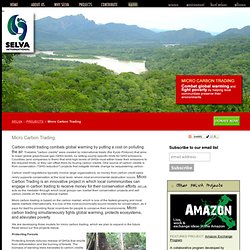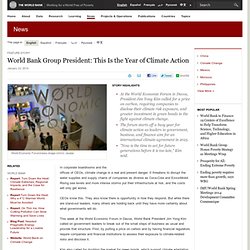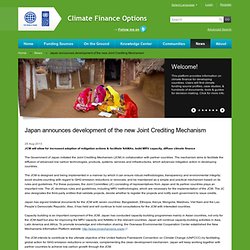

SELVA International. Micro Carbon Trading Carbon credit trading combats global warming by putting a cost on polluting the air.

Tradable "carbon credits" were created by international treaty (the Kyoto Protocol) that aims to lower global greenhouse gas (GHG) levels, by setting county-specific limits for GHG emissions. Countries (and companies in them) that emit high levels of GHGs must either lower their emissions to the required limits, or they can offset them by buying carbon credits. One source of carbon credits is from conservation ("GHG reduction") projects that mitigate climate change by sequestering carbon.
Carbon credit negotations typically involve large organizations, so money from carbon credit sales rarely supports conservation at the local level- where most environmental destruction occurs. Micro Carbon Trading is an innovative project in which local commmunities can engage in carbon trading to receive money for their conservation efforts. EcoPlanet Bamboo; Making Bamboo the Timber of the 21st Century through the Development of Sustainable Bamboo Plantations. World Bank Group President: This Is the Year of Climate Action. Leading the Charge There are leaders, both in the private and public sectors, that recognize the first-mover advantage and are grabbing the competitive edge.

Among them: Google recently flipped the switch on one of the world’s largest solar power arrays – 9,200 panels covering its corporate headquarters – and acquired smart-thermostat maker Nest in an anticipated ramping up of work on products that can reduce home energy use. Google is one of several companies already using a shadow price on carbon for strategic planning.Philips is rolling out off-grid lighting, LED street lighting, and has a goal of improving the energy efficiency of all its lighting products by 50 percent by 2015.Investors are seeing the payoff: exchange-traded funds in clean energy saw returns reaching up to 140 percent last year. A growing number of countries are also taking climate change seriously and seeing economic opportunities in action: There is also encouraging movement on carbon pricing instruments. Solver 2012. Beamer. Butterfly Brochure3. Oasis Microgrid. Japan announces development of the new Joint Crediting Mechanism.
JCM will allow for increased adoption of mitigation actions & facilitate NAMAs, build MRV capacity, diffuse climate finance The Government of Japan initiated the Joint Crediting Mechanism (JCM) in collaboration with partner countries.

The mechanism aims to facilitate the diffusion of advanced low carbon technologies, products, systems, services and infrastructures, which advances mitigation action in developing countries. The JCM is designed and being implemented in a manner by which it can ensure robust methodologies, transparency and environmental integrity; avoid double-counting with regard to GHG emission reductions or removals; and be maintained as a simple and practical mechanism based on its rules and guidelines. For these purposes, the Joint Committee (JC) consisting of representatives from Japan and its partner countries plays an important role. The JC develops rules and guidelines, including MRV methodologies, which are necessary for the implementation of the JCM.
Adaptation to Climate Change - Private Sector Initiative. Adaptation Private Sector Initiative (PSI) Following a successful launch in 2011/2012, the Adaptation Programme of the UNFCCC Secretariat under its Nairobi work programme (NWP) on impacts, vulnerabilities and adaptation to climate change is calling upon private sector organizations and other stakeholders to submit case studies that show innovative activities of adaptation to climate change.

Please tell us your story on how your organization is engaging and adapting to climate change in a sustainable manner, reducing business risks, reducing and avoiding the impacts and the vulnerabilities posed by extreme climate events, and also profiting from the opportunities that changes in climatic conditions present. Download and fill in the submission form with your organization’s case study, and send it to nwp@unfccc.int. Please, refer to "NWP case study" in the subject line.
The case studies will be shared publically in our dedicated online database. Africa Forest Climate Change. Forest Stewardship Council ® World Agroforestry Centre. Carbon Africa. Woods Hole Research Center. The climate is changing at an unprecedented rate in human history, tropical forests are being cut, freshwater resources are at risk, and biological diversity is declining.

We know how to reverse these trends, but it will be the great challenge of our generation to sustain prosperous and meaningful life experiences for 7 to 10 billion people while stewarding the climate, forests, soils, air, and water upon which life depends. Photo credit Chris Linder. Our Mission: To advance scientific discovery and seek science-based solutions for the world’s environmental and economic challenges through research and education on forests, soils, air, and water. Our Vision: A world in which the insights of science guide management of the Earth’s natural resources, so that we and future generations may sustain prosperous and fulfilling lives without degrading the ecosystems that support humanity and a diverse abundance of life.
What We Do: